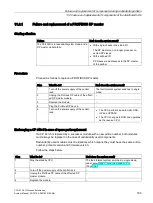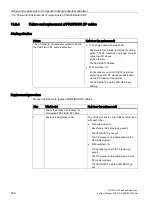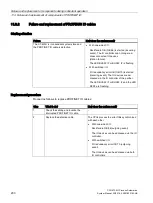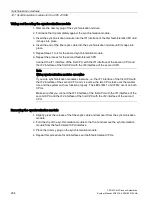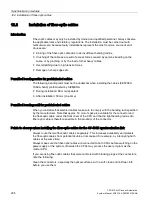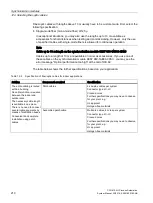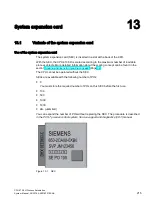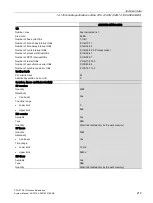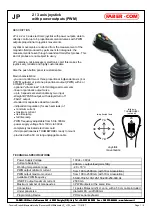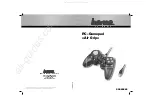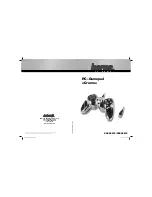
Synchronization modules
12.2 Installation of fiber-optic cables
CPU 410-5H Process Automation
206
System Manual, 09/2014, A5E31622160-AB
12.2
Installation of fiber-optic cables
Introduction
Fiber-optic cables may only be installed by trained and qualified personnel. Always observe
the applicable rules and statutory regulations. The installation must be carried out with
meticulous care, because faulty installations represent the most common source of error.
Causes are:
●
Kinking of the fiber-optic cable due to an insufficient bending radius.
●
Crushing of the cable as a result of excess forces caused by persons treading on the
cable, or by pinching, or by the load of other heavy cables.
●
Overstretching due to high tensile forces.
●
Damage on sharp edges etc.
Permitted bending radius for prefabricated cables
The following bending radii must not be undershot when installing the cables (6ES7960–
1AA04–5xA0) prefabricated by SIEMENS.
●
During installation: 88 mm (repeated)
●
After installation: 59 mm (one-time)
Permitted bending radii for prefabricated cables
When you install self-assembled cables make sure to comply with the bending radii specified
by the manufacturer. Note that approx. 50 mm of space is available for the connector and
the fiber-optic cable under the front cover of the CPU and that no tight bending radius of a
fiber-optic cable is therefore possible in the proximity of the connector.
Points to observe when installing the fiber-optic cables for the S7-400H synchronization link
Always route the two fiber-optic cables separately. This increases availability and protects
the fiber-optic cables from potential double errors caused, for example, by interrupting both
cables at the same time.
Always make sure the fiber-optic cables are connected to both CPUs before switching on the
power supply or the system, otherwise the CPUs may process the user program as the
master CPU.
If you are using fiber-optic cables that were not stored with blanking plugs at the connectors,
note the following:
Clean the connectors, especially the optical surfaces, with a soft, clean and lint-free cloth
before you use them.




